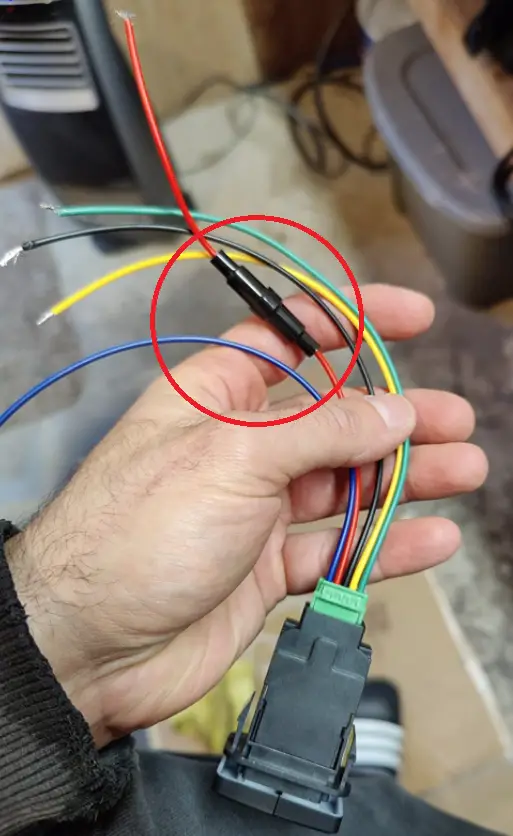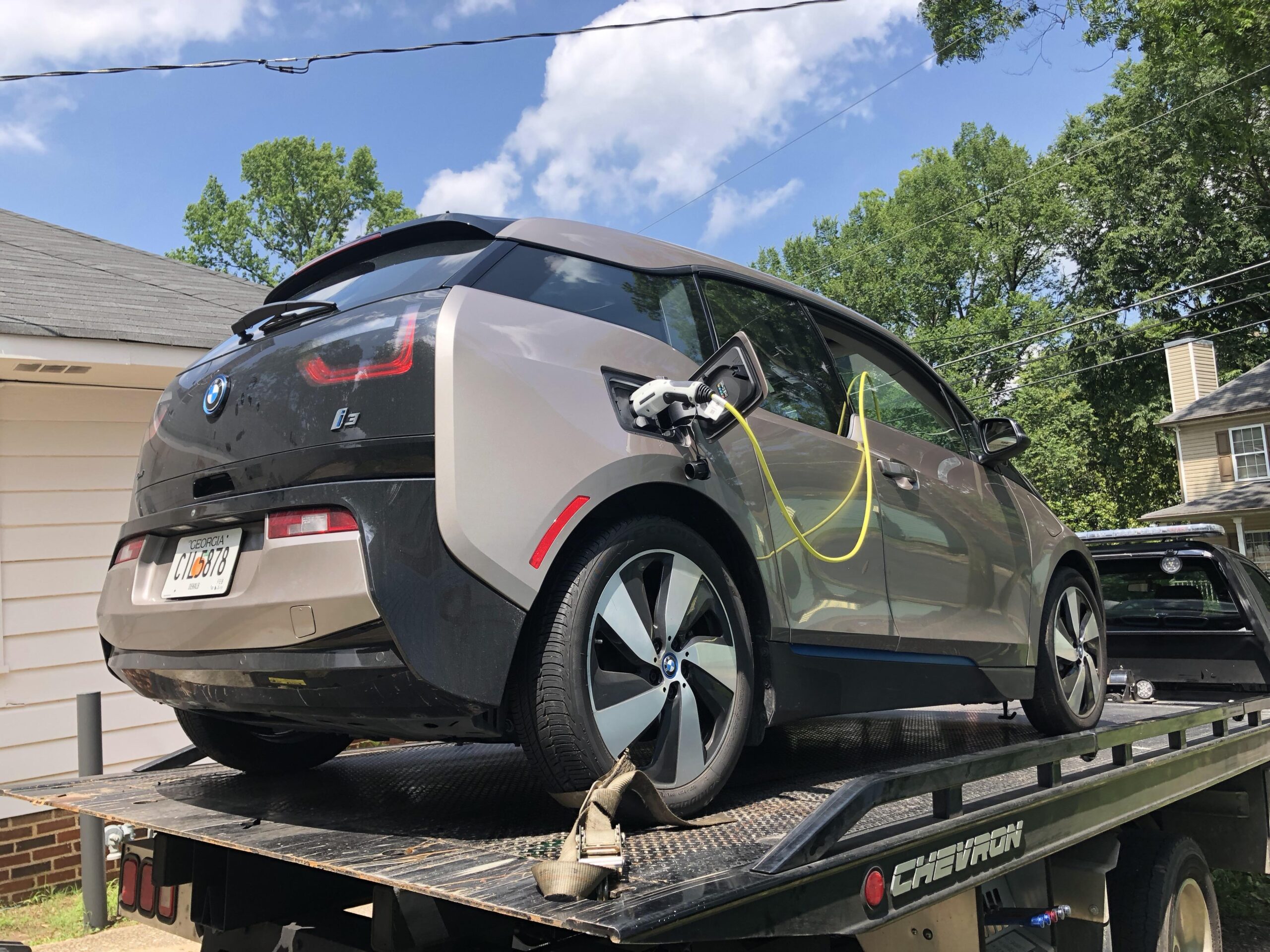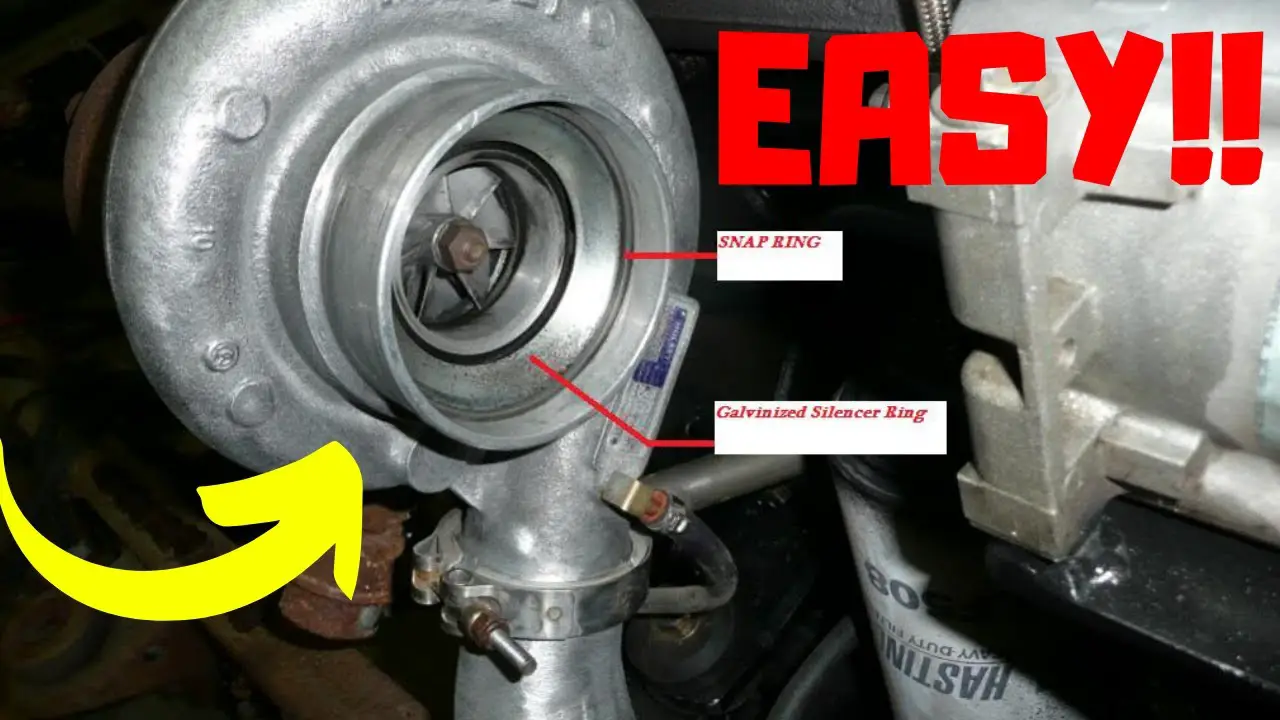The functionality of a vehicle’s tail light holds significant importance in ensuring safety during driving, as it serves as a crucial component for visibility on the road. Adhering to regulations in nearly every country, driving without a properly functioning tail light is not permissible. Hence, maintaining the operational status of this component is pivotal prior to embarking on any journey.
However, a perplexing issue frequently encountered by many drivers is the recurring blowing out of the tail light fuse, leaving the light non-operational. This predicament prompts a search for its underlying causes and viable solutions. In this article, I aim to delve into the reasons behind this persistent fuse failure and provide practical methods for rectifying the issue.
By exploring potential factors that lead to the constant blowing of the tail light fuse and offering solutions to remedy this concern, this piece endeavors to equip you with the necessary knowledge to address and resolve this common vehicular problem. Stick around to uncover the insights you’ve been seeking to ensure your tail light functions reliably.
Also Read: Can I Drive With Code P06DD? Symptoms, Causes, And Solutions
Why Does My Tail Light Fuse Keeps Blowing Out?
The recurrent blowing of a vehicle’s tail light fuse can be a frustrating and perplexing issue for many drivers. When encountering such a problem, understanding the potential reasons behind this persistent occurrence is vital. Here are several common causes and corresponding solutions to address the blowing of tail light fuses:
-
Short Circuit in the Wiring
- Cause: One of the most frequent reasons for a tail light fuse blowing is a short circuit in the wiring. This occurs when a live wire comes into contact with a ground wire or the vehicle’s frame, leading to excessive current flow and subsequent fuse failure.
How to Fix a Short Circuit
Locating and fixing a short circuit involves meticulous examination of the wiring. Disconnect the power source, carefully inspect the wiring for any fraying, damage, or exposed wires, and then repair or replace the affected sections. In some cases, professional assistance might be necessary to ensure a thorough and safe repair.
- Cost: Repairs for a short circuit in the wiring might range from $50 to $200, depending on the extent of the damage and whether you perform the repairs yourself or hire a professional mechanic.
-
Problem with the Tail Lights Themselves
- Cause: The issue might reside in the tail lights. Faulty or damaged tail lights can draw excessive current, leading to fuse failure.
How to Fix the Problem with the Tail Lights
Inspect the tail lights for any visible damage, corrosion, or loose connections. Replace or repair the faulty tail lights as needed. Sometimes, a simple cleaning of the connectors or bulb replacement can resolve the issue.
- Cost: Repairing or replacing tail lights can vary widely. Simple fixes such as cleaning connectors or bulb replacement might cost around $20 to $50. However, complete tail light replacements could range from $100 to $300 or more, including parts and labor.
- Problem with the Electrical System
-
- Cause: A broader issue within the vehicle’s electrical system can lead to the blowing of tail light fuses. This could include problems with the vehicle’s wiring, switches, or even the battery.
How to Fix Problems with the Electrical System
A comprehensive inspection of the electrical system is necessary. Check the battery, switches, and wiring for any signs of wear, corrosion, or damage. Repair or replace the affected components to rectify the issue.
- Cost: Addressing broader electrical system issues can be more costly. Prices may range from $100 to $500 or more, depending on the complexity of the problem and the need for replacement parts or professional services.
-
Incompatible Light Bulb Size
- Cause: If the bulb installed in the tail light is of the wrong size or wattage, it can cause excessive power draw, leading to fuse failure.
- Solution: Ensure that the correct bulb size and wattage specified for your vehicle are used. Replace the bulb with the appropriate one to prevent excessive power draw.
- Cost: This is generally a minimal cost item, usually ranging from $5 to $20 for a new bulb.
-
Failure of the Fuse Terminal
- Cause: The terminal or connection point where the fuse is installed may be faulty, causing the fuse to blow repeatedly.
- Solution: Inspect the fuse terminal for any signs of damage or corrosion. Clean or replace the terminal if necessary to ensure a proper connection for the fuse.
- Cost: Replacement of a fuse terminal is relatively inexpensive, typically ranging from $10 to $50, including the cost of the part and potential labor.
Why does the tail light bulb keep blowing Out?

The continuous blowing of a tail light bulb can be an exasperating issue for drivers. Several common reasons contribute to this recurrent problem, necessitating a closer examination to rectify the issue.
-
Overvoltage or Voltage Spikes
Voltage irregularities within the vehicle’s electrical system can cause excessive power surges, leading to the premature blowing of tail light bulbs. These irregularities might stem from a malfunctioning voltage regulator, alternator, or issues within the wiring system.
-
Loose or Poor Connections
Inadequate connections or loose fittings within the tail light assembly can cause flickering or intermittent functioning of the bulb, leading to frequent burnouts. Vibrations and vehicle movement can exacerbate this issue.
-
Usage of Incorrect Bulb Wattage or Type
Using the wrong bulb wattage or type not specified for the vehicle can lead to an excessive load on the tail light circuit. This can result in frequent bulb blowouts due to increased heat or inappropriate power draw.
-
Excessive Heat Buildup
Extended operation or constant usage of the tail lights can generate excessive heat within the assembly. Over time, this heat can damage the bulb filament, leading to frequent bulb failures.
-
Mechanical Stress or Vibration
Harsh road conditions, bumps, and shocks from rough terrain can subject the vehicle to mechanical stress, causing vibrations that can contribute to premature filament failure within the bulb.
Solutions
Resolving these issues might involve checking and potentially replacing the voltage regulator, ensuring secure connections within the tail light assembly, using the correct bulb wattage specified by the vehicle manufacturer, allowing adequate cooldown periods for the lights, and securing the tail light assembly against mechanical stress and vibrations.
Seeking professional assistance for diagnosing and addressing these issues might be necessary to ensure the problem is accurately identified and properly resolved. Understanding the potential causes behind the recurrent blowing of tail light bulbs can help in preemptively addressing and rectifying the issue, ensuring safer and more reliable vehicle lighting.
Addressing Headlight Fuse Failures
Frequent blows to headlight fuses can be a persistent and frustrating issue for many drivers. Several potential reasons contribute to this recurring problem, necessitating a thorough examination to identify the root cause and offer viable solutions.
High-Resistance Short Circuit
A high-resistance short circuit in the headlight system can lead to excessive current flow, causing the fuse to blow repeatedly. This often occurs due to a damaged wire, corroded connector, or a faulty component within the headlight circuit.
Does One Fuse Control Both Headlights?
Whether a single fuse controls both headlights or if each headlight has its individual fuse varies among vehicles. Some cars have a single fuse responsible for both headlights, while others might have separate fuses for each. Checking the vehicle’s manual or consulting a mechanic can help determine the fuse setup in your specific vehicle.
Important: Transmission Pan Torque Specs: Why Are They Vital?
Solutions to Headlight Fuse Blows
Addressing this issue involves a methodical approach to rectify the underlying causes:
- Inspecting Wiring and Connectors
Thoroughly examine the wiring leading to the headlights for any signs of damage, corrosion, or loose connections. Address any issues found by repairing or replacing the affected components.
- Component and Bulb Examination
Check the condition of the headlight bulbs and associated components. Faulty bulbs or damaged components can cause irregular power flow leading to fuse blows. Replace these components as necessary.
- Professional Diagnostics
If the issue persists or if it requires expertise beyond basic inspections, seeking professional help from a qualified mechanic or electrician is advisable. They can conduct a detailed diagnosis using specialized tools and methods to pinpoint the precise problem.
- Upgrading Fuses and Relays
Sometimes, replacing the standard fuses with higher amperage ones might seem like a quick fix, but it can be dangerous. Opt for professional guidance to ensure safety and avoid potential damage to the vehicle’s electrical system.
Is It Possible To Drive with a Blown Fuse?
Driving with a blown fuse can be risky and, in some cases, illegal. Fuses are essential safety components that protect the electrical system of a vehicle. When a fuse blows, it typically indicates an electrical issue within the system it protects.
Continuing to drive with a blown fuse can lead to various problems. For instance, a blown fuse might cause certain vital components such as headlights, brake lights, or turn signals to malfunction, significantly affecting visibility and safety on the road.
Additionally, it could impact the functionality of crucial vehicle systems, including the engine, transmission, or safety mechanisms like airbags.
Moreover, in certain areas or jurisdictions, driving with non-functioning lights due to blown fuses could result in a traffic violation, leading to potential fines or citations. Therefore, it’s advisable not to drive a vehicle with a blown fuse.
Instead, address the issue promptly by diagnosing the problem and replacing the blown fuse with the correct type and amperage to ensure safe and lawful operation of your vehicle. If needed, seek professional assistance to accurately diagnose and fix the underlying electrical issue.
Troubleshooting Tail Light Fuse Failures Across Multiple Car Models
The consistent blowing of tail light fuses in various car models such as the Chevy HHR, Scion FRS, Infiniti G35, Toyota vehicles, 1997 Chevrolet Silverado, and Chrysler 300 can be a perplexing and recurrent issue faced by drivers. This problem of blown fuses in the tail lights can lead to various concerns, including safety hazards, reduced visibility on the road, and potential legal implications due to non-functioning rear lights.
This recurring problem may stem from a range of common causes:
- Electrical Overload
A short circuit within the tail light circuitry, caused by damaged or exposed wiring, may lead to excessive current flow, consequently blowing the fuse.
- Bulb-related Issues
Incorrect or faulty bulbs, as well as the utilization of bulbs with the wrong wattage, can draw excessive power, leading to frequent fuse blowouts.
- Corrosion and Poor Connections
Corrosion or loose connections in the tail light assembly can increase resistance, causing a surge in the current and resulting in blown fuses
- Aftermarket Modifications
Custom modifications or alterations made to the vehicle’s lighting system, especially through aftermarket installations, could interfere with the electrical integrity, leading to fuse failures.
Resolving this recurring issue typically involves a systematic inspection and potential repairs or replacements. Drivers can start by examining the wiring, connectors, and bulbs for any signs of damage, wear, or incorrect usage. Ensuring the right bulbs and wattage as recommended by the vehicle’s specifications is crucial.
FAQs: Why Does My Tail Light Fuse Keeps Blowing Out?
Why do my tail lights keep blowing the fuse?
Tail lights can blow a fuse due to various reasons, such as a short circuit in the wiring, malfunctioning bulbs, or issues within the electrical system. Identifying the root cause is crucial to address this recurrent problem.
How do you fix a fuse that keeps blowing?
Fixing a fuse that repeatedly blows involves diagnosing the underlying issue causing the fuse to blow. Inspecting the wiring, bulbs, and connections for damage or faults, and rectifying any problems found is essential to prevent the fuse from blowing again.
Why does my light fuse keep blowing?
A light fuse can blow due to electrical faults, such as short circuits, overloading, or incorrect bulb wattage. Identifying and rectifying these issues is essential to prevent the continual blowing of the fuse.
Why does my tail light keep going out?
Tail lights may intermittently stop working due to blown fuses, damaged wiring, faulty bulbs, or poor connections. Regular checks and maintenance can help identify and resolve these issues promptly.
What would be the likely cause of a blown fuse?
Common causes of blown fuses include short circuits, overloading, damaged wiring, faulty bulbs, or issues within the electrical system of the vehicle.
Is there a fuse that controls the tail lights?
Yes, most vehicles have a dedicated fuse or a set of fuses that control the tail lights. These fuses protect the circuitry from damage due to electrical faults.
How do you fix a blown tail light?
Replacing a blown tail light typically involves accessing the light assembly, removing the damaged bulb, and installing a new one. Ensuring the correct bulb type and proper installation is essential.
Is there a relay for tail lights?
In some vehicles, relays are used to control the tail lights. Relays manage the electrical flow to the tail lights and other systems. Checking the relay and its connections can be crucial if there are tail light issues related to the relay system.
Conclusion
Addressing the recurring issue of blown tail light fuses across various car models necessitates a proactive approach to vehicle maintenance and electrical system care. The safety and functionality of tail lights are critical for safe driving. Regular inspections, prompt repairs, and adherence to manufacturer specifications for bulbs and fuses can significantly reduce the occurrence of blown fuses.
By understanding the common causes—such as short circuits, faulty bulbs, or electrical system issues—and implementing appropriate solutions, drivers can ensure their tail lights function reliably. Seeking professional assistance for complex electrical issues is advisable, ultimately ensuring road safety, compliance, and uninterrupted tail light functionality.
Recommended products by our experts:




